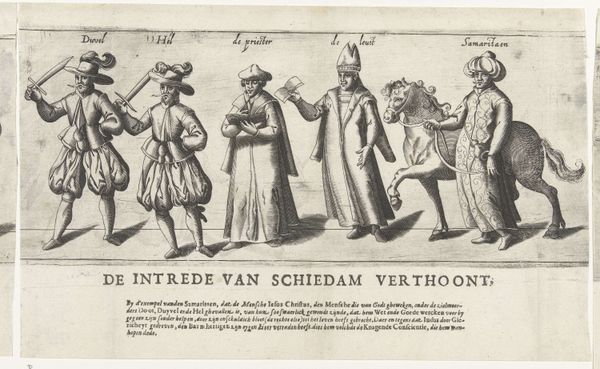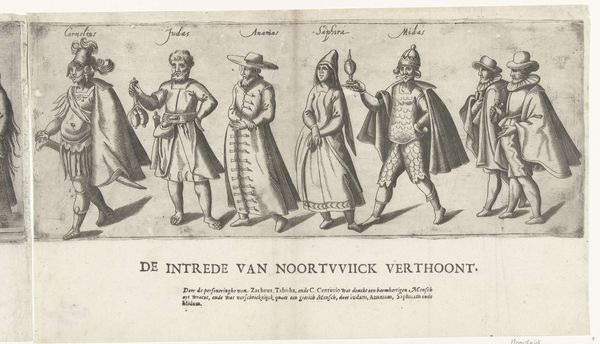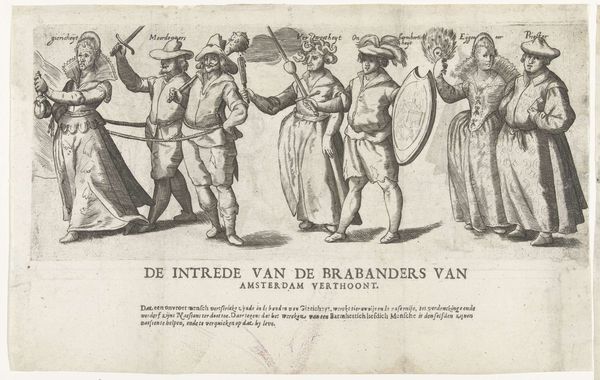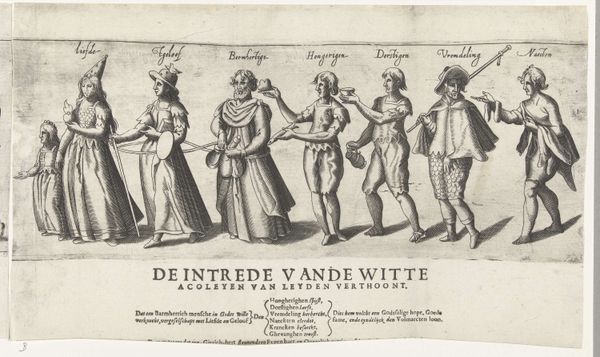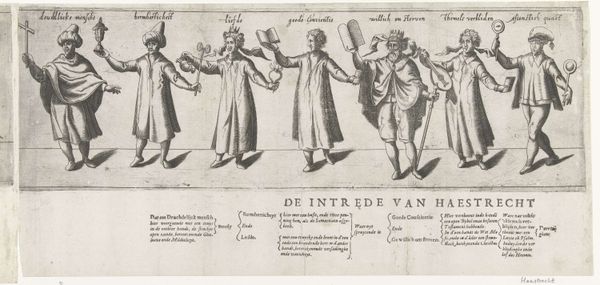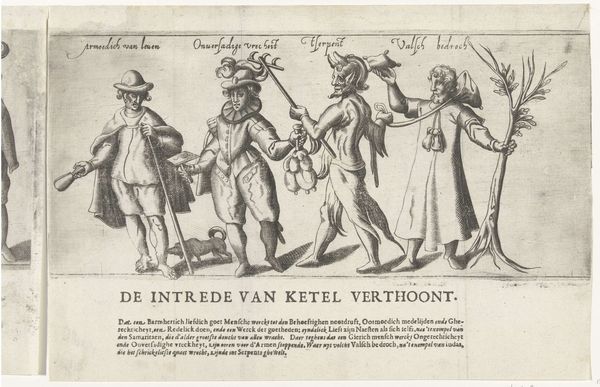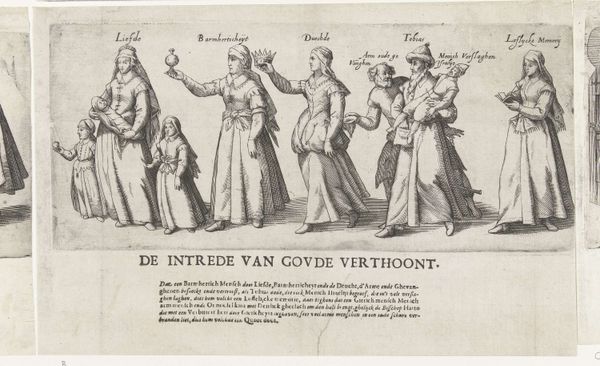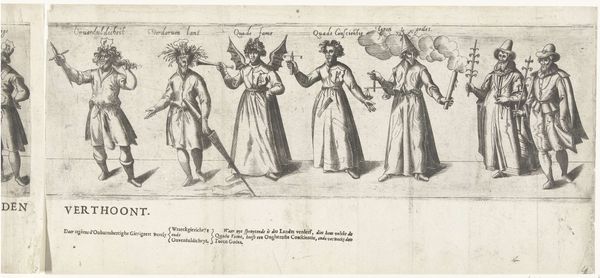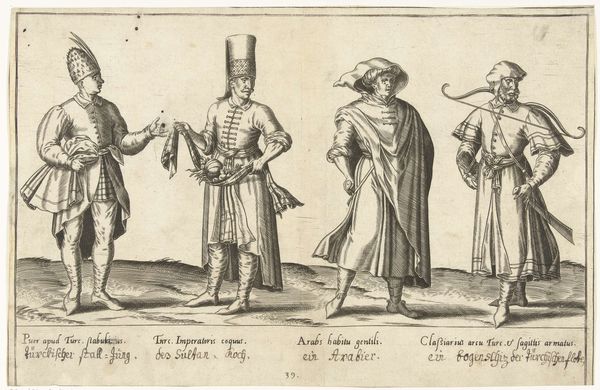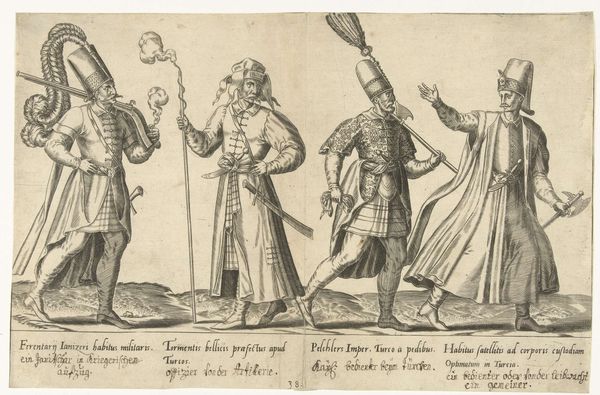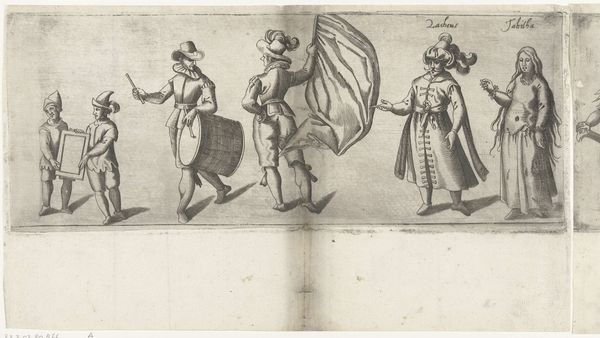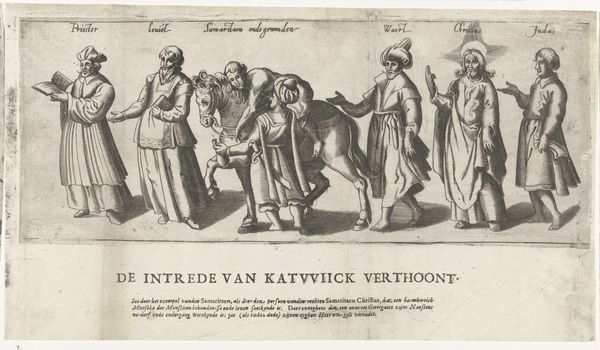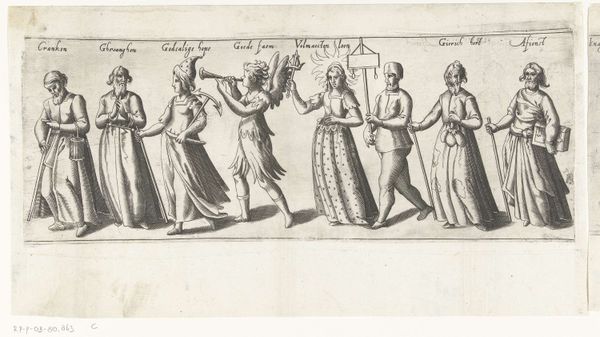
Optocht door de Vlaamse rederijkerskamer De Orange Lelie / De Witte Lelie uit Leiden (derde deel), 1607 1607
0:00
0:00
print, engraving
#
baroque
# print
#
genre-painting
#
history-painting
#
engraving
Dimensions: height 200 mm, width 430 mm
Copyright: Rijks Museum: Open Domain
Editor: Here we have "Procession of the Flemish Chamber of Rhetoric 'De Orange Lelie / De Witte Lelie' from Leiden", created anonymously in 1607, an engraving now residing in the Rijksmuseum. It's a very curious image... a series of costumed figures processed across the scene. What can we unpack here? How do you interpret this work, thinking about its original context? Curator: This print gives us a fascinating glimpse into the performance of civic identity in the Dutch Republic at a pivotal moment. Rhetoric societies were incredibly important social and political players. The act of parading wasn’t just spectacle; it was a demonstration of power, an argument being made about who belonged, who mattered, and what values were being upheld. Editor: So, each figure would represent an idea or concept, then? Curator: Precisely. Think about the social and religious upheaval of the time. The Dutch Republic was still quite new, having only recently revolted against Spanish rule. The figures depicted likely embody virtues or societal ideals important to the emerging Dutch identity, perhaps as the Leiden chamber wished to define it for itself, but we might want to question what their definition leaves out. Who isn’t represented here, and what power structures are being reinforced? Editor: That's a really insightful point – whose voices are missing from this performative display? The focus seems to be on ideals. How would this procession work to reinforce cultural values and societal structures in Leiden at that specific time? Curator: Consider the historical context. Leiden was a major center for religious refugees, particularly from Flanders. These parades, with their allegorical figures and elaborate costumes, played a significant role in integrating newcomers into the city, or more accurately asking them to assimilate. However, such cultural displays were often double-edged swords: outwardly welcoming yet subtly policing cultural boundaries. Editor: This adds a whole new layer to my understanding of the artwork. What seemed at first like a straightforward depiction is in reality filled with subtle commentaries about power, acceptance, and cultural identity. Curator: Exactly. The beauty of art history lies in understanding how historical objects reflected and shaped societal dynamics. And the best lessons often come from asking uncomfortable questions.
Comments
No comments
Be the first to comment and join the conversation on the ultimate creative platform.
